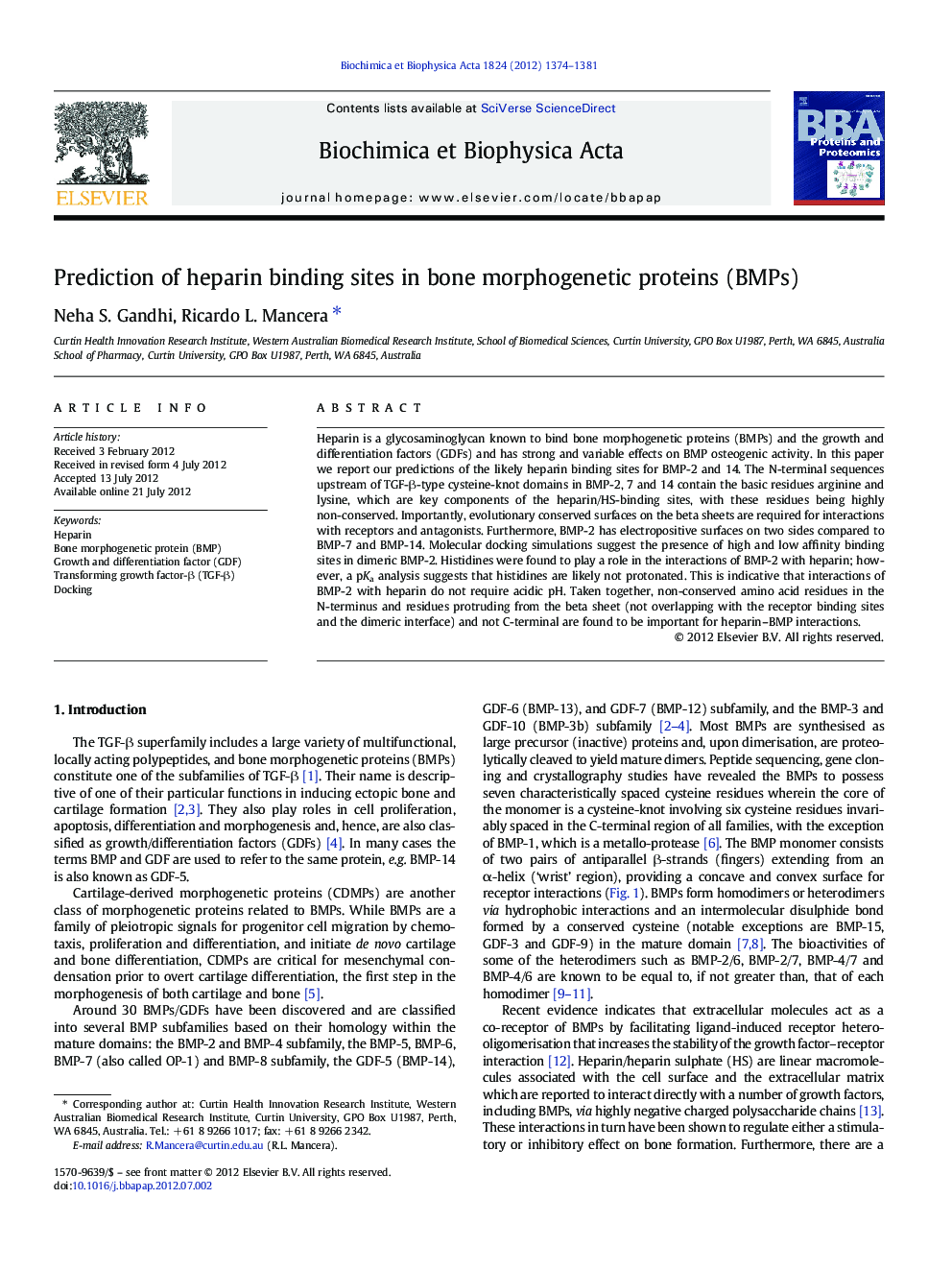| Article ID | Journal | Published Year | Pages | File Type |
|---|---|---|---|---|
| 1178398 | Biochimica et Biophysica Acta (BBA) - Proteins and Proteomics | 2012 | 8 Pages |
Heparin is a glycosaminoglycan known to bind bone morphogenetic proteins (BMPs) and the growth and differentiation factors (GDFs) and has strong and variable effects on BMP osteogenic activity. In this paper we report our predictions of the likely heparin binding sites for BMP-2 and 14. The N-terminal sequences upstream of TGF-β-type cysteine-knot domains in BMP-2, 7 and 14 contain the basic residues arginine and lysine, which are key components of the heparin/HS-binding sites, with these residues being highly non-conserved. Importantly, evolutionary conserved surfaces on the beta sheets are required for interactions with receptors and antagonists. Furthermore, BMP-2 has electropositive surfaces on two sides compared to BMP-7 and BMP-14. Molecular docking simulations suggest the presence of high and low affinity binding sites in dimeric BMP-2. Histidines were found to play a role in the interactions of BMP-2 with heparin; however, a pKa analysis suggests that histidines are likely not protonated. This is indicative that interactions of BMP-2 with heparin do not require acidic pH. Taken together, non-conserved amino acid residues in the N-terminus and residues protruding from the beta sheet (not overlapping with the receptor binding sites and the dimeric interface) and not C-terminal are found to be important for heparin–BMP interactions.
► BMPs induce osteoblast differentiation in mesenchymal cells. ► BMPs have been shown to be heparin-binding proteins. ► Molecular modelling techniques for the prediction of the heparin binding sites ► Heparin–BMP complex alternative source of drug delivery
